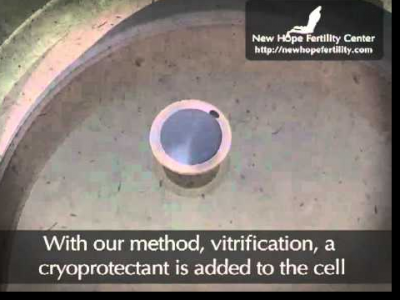How many ovules do you need to obtain for the IVF?
Virtually all in vitro fertilization (IVF) processes include an ovarian stimulation treatment. The objective of this is to promote the maturation of more than one ovule, which is what occurs naturally, in order to obtain a greater number of ovules and increase the probability of pregnancy.
Before this treatment many women ask themselves the following question: How many ovules should be obtained in order to achieve pregnancy in an IVF process? Although there is no single answer, in this article we clarify this issue.
Below you have an index with all the points that we will discuss in this article.
Index
How many ovules do you need to get for IVF?- 1. Response to ovarian stimulation
- 2. Estimation of the number of oocytes
- 2.1. The size of the follicles
- 2.2. The concentration of estradiol in the blood
- 3. Quantity or quality of the ovules?
- 4. Questions from users
- 4.1. Is the quality or quantity of eggs more important in an IVF cycle?
- 4.2. How many follicles are needed for an IVF?
- 4.3. My gynecologist tells me they plan to get 4 mature eggs in the extraction, is that okay?
Response to ovarian stimulation
The process of stimulation of the ovary that is applied in IVF-ICSI treatments is based on the administration of hormones to externally control the ovarian cycle. It lasts approximately 8 days, and can be prolonged if the doctor indicates the use of contraceptives in the previous cycle.
This response will vary from one woman to another depending on the qualities of each woman, the prescribed medication regimen, the fertility situation of the woman, etc.
Thus, we can distinguish three types of women based on the response to ovarian stimulation:
- Low responders: according to the SEF (Spanish Fertility Society), it is women who have only been able to get a maximum of 3 ovules is the follicular puncture after stimulation. There are other entities that consider the limit in 5 ovules.
In this group we found women with a low ovarian reserve, usually due to age, and also those with certain pathologies that prevent obtaining a greater number of ovules.
- Norresponders: this group includes the majority of women. After ovarian stimulation, it is possible to obtain a good number of ovules. Generally, this value is between 6-7 and 9-10 ovules per cycle.
- Hyperresponders: this group corresponds to women from which an average of 20 oocytes per cycle can be obtained. They tend to be young women without fertility problems. An example of hyperresponsive women is found in donors. Although they are exceptional, there are cases in which up to 50 ovules have been obtained in a single cycle.
During the stimulation period, the woman must go to the specialist's office so that the latter can assess the ovarian response to the hormonal medication administered and adjust the dose.
Being in a group or another is not indicative of pathology, that is, the normal thing in a woman with 45 years is to be low responder. In fact, it is not that their response is low, but that few ovules are obtained in the puncture because their ovarian reserve is low, since it is close to menopause.
For its part, a healthy woman of 20 years is expected to respond excessively to stimulation, so it is essential to properly control the dose of medication. The pathological thing would be that this young woman manifested a low response.
In Assisted Reproduction ORG we have agreements with Spanish fertility clinics to help you get the best price on your treatments.
You can directly access our Promotions Section for more information and a free first visit: See promotions in FIV / ICSI.

Estimation of the number of oocytes
Ovarian (or follicular) puncture is the surgical procedure in which the ovules are obtained after ovarian stimulation. The objective of this operation is to extract the ovules when they are in a stage of ovarian maturation known as metaphase II. This is the optimal stage to obtain a viable embryo after fertilization by the sperm.
To program the follicular puncture in the opportune moment, before the spontaneous ovulation occurs, and to be able to predict approximately the number of ovules that we will obtain, these two aspects are analyzed: the follicular size and the estradiol concentration.
Tests to estimate the number of ovules that will be obtainedEach follicle develops an oocyte inside, but it is possible that, at the time of the puncture, some follicles do not have an oocyte inside or that some oocytes obtained are immature and, therefore, unfit to be fertilized.
Therefore, the number of oocytes recovered after ovarian puncture may be less than the number of follicles seen the previous days on ultrasounds or estimated according to estradiol.
Comments
Post a Comment